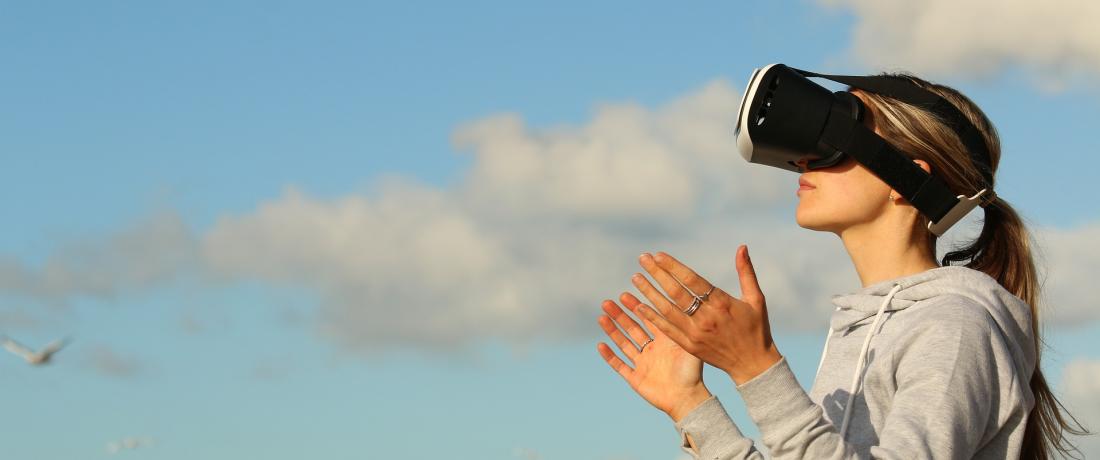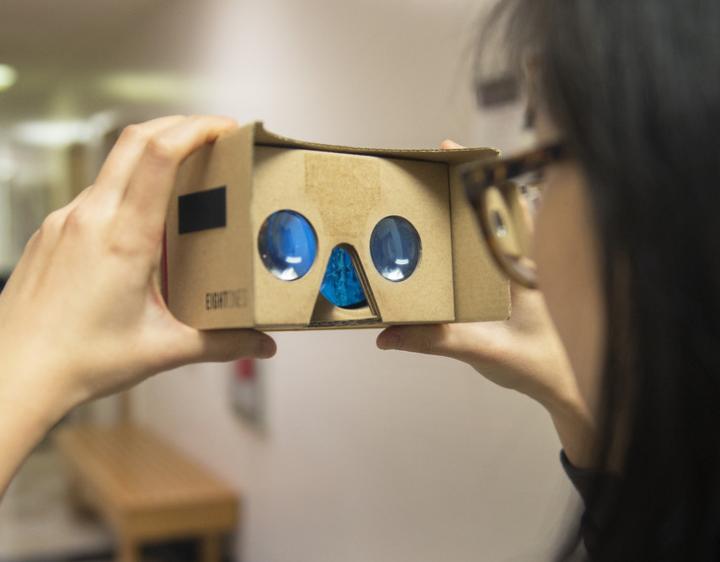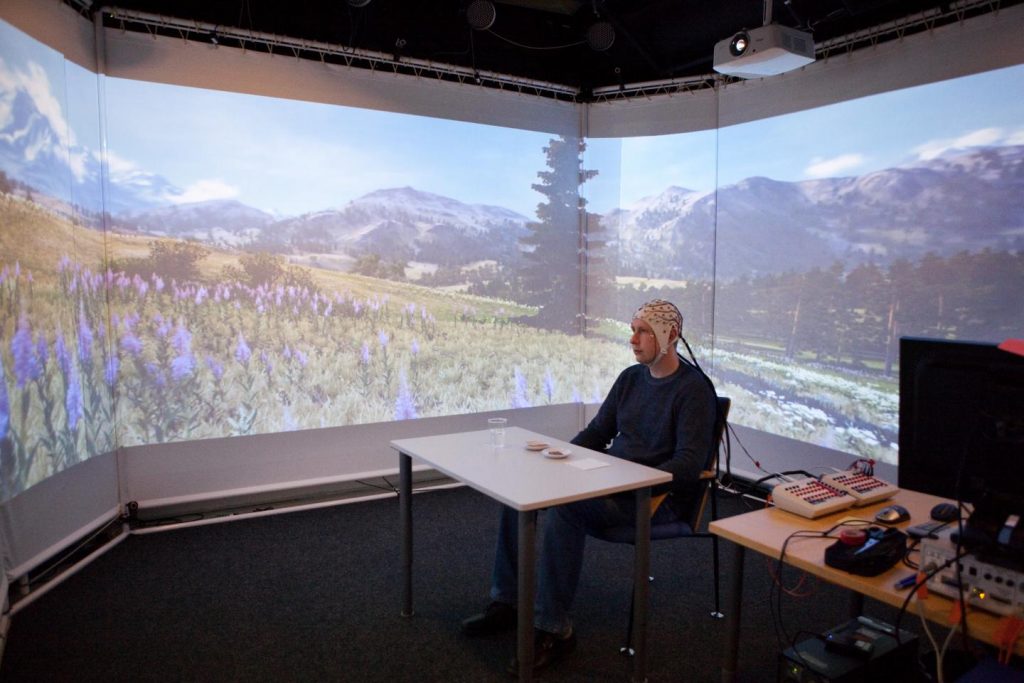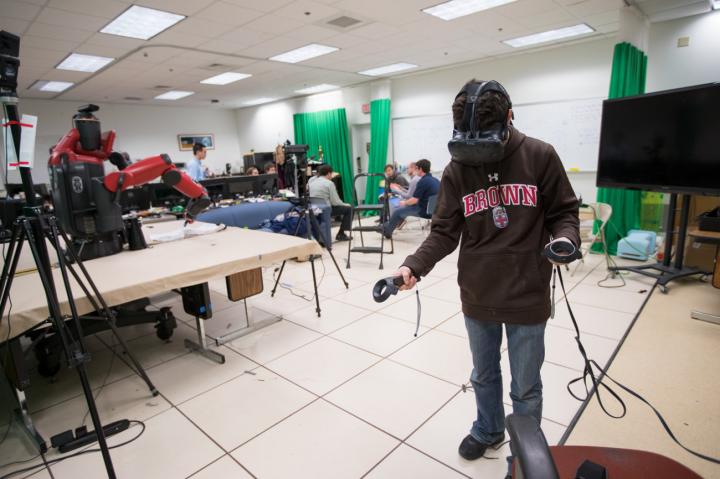
Though commonly associated with video gaming, virtual reality (VR), alongside augmented reality (AR), holds immense potential to change marketing regardless of the industry. According to a recent Greenlight VR report, 53% of consumers would buy from any business applying this tech. It is a telling argument, isn’t it?
However, incorporating virtual reality into your brand strategy might be tricky. Luckily, The Loupe has some insights on how to use virtual reality in real-life scenarios. Let’s look through these together.
Storytelling
We’ve already found that a good narrative is itself a powerful marketing tool, but virtual reality can turn a story into a truly immersive experience, which significantly outperforms text-based articles. So state researchers from the Media Effects Research Laboratory.
 The virtual reality cardboard viewer utilizes a mobile phone application to display stories. Credit: Patrick Mansell The scientists asked 129 volunteers to either read two stories in the New York Times Magazine or watch them using a cardboard VR reader or 360-degree video. The participants noted that virtual reality stories gave them the strongest sense of presence and evoked more empathy for the characters than both text and video. The feeling of “being there” encourages people to share the content, but such intention doesn’t always mean they find it reliable. “What really makes people trust VR more is that it creates a greater sense of realism compared to text and that creates the trustworthiness,” says Professor S. Shyam Sundar, lead author of the study. "But, if it doesn't give that sense of realism, it can affect credibility. If developers try to gamify it or make it more fantasy-like, for example, people may begin to wonder about the credibility of what they're seeing.” Though 360-degree videos cannot match the effectiveness of VR stories, they are still more immersive than text with pictures. Therefore, these videos may be considered a wise solution for a tight budget. However, one should remember that both virtual reality and 360-degree video require scrutiny, so readers would not likely be able to recall the details.
The virtual reality cardboard viewer utilizes a mobile phone application to display stories. Credit: Patrick Mansell The scientists asked 129 volunteers to either read two stories in the New York Times Magazine or watch them using a cardboard VR reader or 360-degree video. The participants noted that virtual reality stories gave them the strongest sense of presence and evoked more empathy for the characters than both text and video. The feeling of “being there” encourages people to share the content, but such intention doesn’t always mean they find it reliable. “What really makes people trust VR more is that it creates a greater sense of realism compared to text and that creates the trustworthiness,” says Professor S. Shyam Sundar, lead author of the study. "But, if it doesn't give that sense of realism, it can affect credibility. If developers try to gamify it or make it more fantasy-like, for example, people may begin to wonder about the credibility of what they're seeing.” Though 360-degree videos cannot match the effectiveness of VR stories, they are still more immersive than text with pictures. Therefore, these videos may be considered a wise solution for a tight budget. However, one should remember that both virtual reality and 360-degree video require scrutiny, so readers would not likely be able to recall the details.
Health & Food Industries
Nobody likes broccoli, right? Well, that might change, say specialists of VTT Technical Research Centre of Finland. They have used virtual and augmented reality technologies to make health-promoting foods more appealing. 
VTT's experiment show that Virtual Reality has significant effects on brain signals and consumer's evaluations of the pleasantness of their eating situation and emotional responses. The experiment was carried out in the CAVE environment at the University of Tampere.
Credit: VTT
During the experiment, 67 participants ate rye nachos and milk chocolates in three environments: a black control one and two VR environments – sunny and rainy. Then they were to evaluate the pleasantness of their eating experiences and emotional responses. The sunny picnic made consumers feel cheerful, while the rainy picnic caused the sense of anxiety and loneliness, which might be the reason why the participants found chocolate more appetizing in the course of the virtual rain. Still, the researchers haven’t observed any differences between the conditions in people’s sensory evaluations of food. The results suggest that augmented reality (AR) and virtual reality (VR) can contribute to the attractiveness of healthy products. “Now is the time to integrate these technologies with food, nutrition and human responses. New digital business across traditional sectoral boundaries will lead to novel opportunities for the digital and food industries,” claims Principal Investigator Nesli Sözer.
Automation
Virtual reality can also be used to control robots. Innovative software developed by computer scientists from Brown University allows humans manipulate a robot’s arms remotely – no matter the distance. All you need to step into the metal skin is a VR headset. Users are able to dive into the robot’s surroundings in either first or third person. That’s how it works:
The researchers decided to experiment with virtual reality because other means of control (keyboards, two-dimensional monitors, video game controllers, etc.) had proven to be inefficient for complex tasks. Unlike those, virtual reality offers live high-definition video, intuitive interface and immersive experience. It is important that the developers have managed to keep the data so small that it could be sent via the web without any lags. Therefore, users can perform tasks from miles away. Moreover, the additional studies show that virtual reality enables people to work 66% faster compared with keyboard and monitor. One of the researchers named Eric Rosen believes the higher speed of performing was due to the tech’s usability. “In VR, people can just move the robot like they move their bodies, and so they can do it without thinking about it. That lets people focus on the problem or task at hand without the increased cognitive load of trying to figure out how to move the robot,” he notes. The system is freely available on the internet. The authors hope the software will be taken in new directions by other robotics researchers who might soon apply it to marketing (through trade shows, interactive shopping or entertainment).  Brown University undergraduate Eric Rosen operates a Baxter robot using a virtual reality interface developed in Brown's Humans to Robots lab.
Brown University undergraduate Eric Rosen operates a Baxter robot using a virtual reality interface developed in Brown's Humans to Robots lab.
Credit: Nick Dentamaro / Brown University
To Sum Up
VR technologies are not science fiction anymore. Both virtual and augmented reality have already overlapped many industries and will continue to expand. So, if you don’t want to miss the benefits they might give, consider upgrading your business to the future mode. Cannot decide how to fit VR to the brand’s needs? Ask The Loupe.